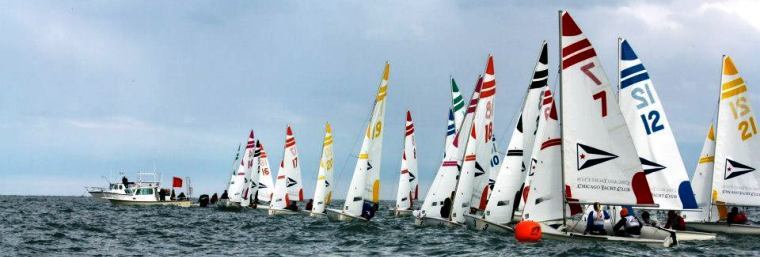
In November, the Lake Travis Sailing Team sent a team to the Great Oaks Regatta Championship for a second time. Having qualified for it at another regatta some week’s prior, they were excited and ready to race at the national level event. Sailors from all over country would be there, with about 40 different teams registered.
The regatta would be held at SYC, (Southern Yacht Club), in New Orleans, which is home to a number of C420s. Typically, high school racing uses either FJs, or C420s, both of which are fairly small, two-person boats. We arrived at the club in the evening, checked in, and headed to where we’d be staying for the weekend.
The morning of the regatta, (after a breakfast of beignets), we arrived at the club at 8 am sharp. First gun would be exactly 10:30 am, so we arrived with ample time to rig boats, attend the skippers meeting, and prepare. The skipper’s meeting is held onshore before racing on the first day of the regatta, and is when the race officials give an overview of how the regatta will be run.
Before long we were rigged and ready to sail. We launched from the dock and headed out. Coaches and sailors, (those not racing the first set), walked to the pavilions where they could watch the racing. Many teams at the regatta had brought between 2-5 sailors, so the could rotate in and out. Our team was one of the few with just two sailors, which meant we would be racing every set, with short breaks in between.
The wind was fairly light, with minimal waves, but these conditions were still tricky. We sailed upwind a few minutes on each tack before the start, and decided playing course left would likely be the right move. Sailing back down to the line, we checked to see the favored end, and ran through the rest of our prestart checklist. At 10:30, the starting sequence began, and exactly five minutes later, we were racing!
Our start had been decent, but not the best. However, our boat speed and upwind tactics brought us back to second around the windward mark. We managed to hold the position downwind, and eventually finished right behind first place. The next race, we came through at the start, and by playing the outer left edge and consolidating back to the middle, we rounded first! The downwind was more tricky this time; being in the front means more boats are behind you, and it’s difficult to keep out of the bad air coming off their sails. Fortunately, we were able to keep our clear lane, and rounded the leeward still in first. The last upwind was the hardest. When the boats behind you split, some going right, some tacking out left, you have to choose which ones to cover. We quickly decided to keep heading out left to a puff, then tack, and take the puff back to the finish. Several minutes later, the plan had worked and we crossed over the finish line in first!
As the day went on the wind steadily built, and after four more sets, (eight more races), we were solidly in second place overall, and not very far out of first. We had finished every race in the top five at least, and most of those had been 1s or 2s. We sailed back to the dock proud of our results that day.
The second (and final) day of racing was considerably shorter than the first. With time for only two sets, we had to make every race count. By racing conservatively, and keeping focused throughout the morning, we were able to move into first, and going in to the last set we were winning the regatta. Unfortunately, some unpredictable winds and weather in the last rotation saw us move back into second. But our consistent racing the first day had paid off, and we finished the regatta just a few points out of first. And besides, second place out of 40 boats is no small accomplishment!
